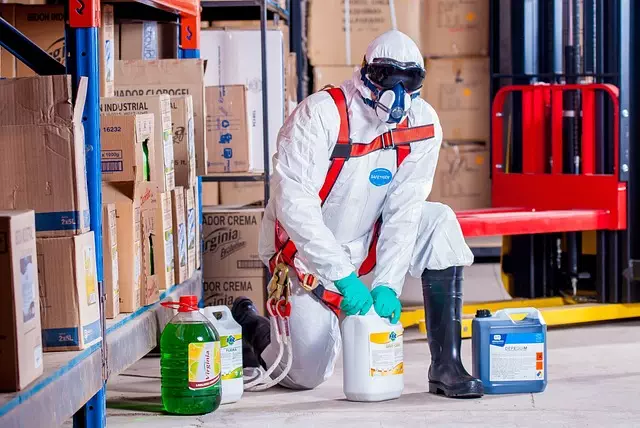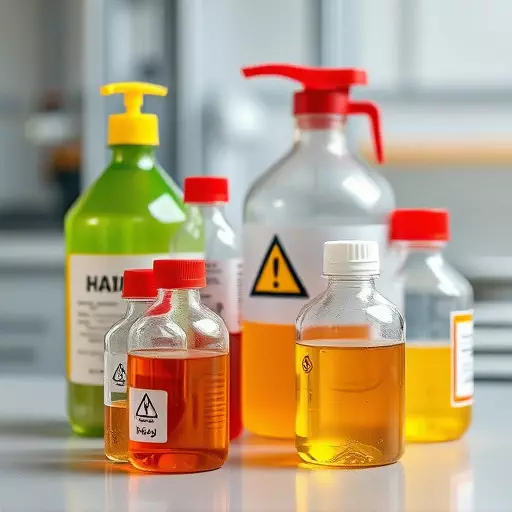Chemical exposure risk management is a cornerstone of industrial safety, with robust industrial hygiene protocols playing a pivotal role in safeguarding worker health by systematically identifying, evaluating, and controlling hazardous materials. These protocols involve comprehensive strategies such as monitoring air quality and surface contamination, conducting exposure assessments, and implementing tailored engineering controls to mitigate the risks of chemical hazards. The effective management of these risks relies on a deep understanding of chemical properties and behavior, enabling the application of controls like local exhaust ventilation systems, respirators, and closed-system transfers to capture contaminants at their source. Companies that regularly update their industrial hygiene protocols to reflect current data and emerging risks are proactive in ensuring regulatory compliance and demonstrating a commitment to worker safety. Hazardous material identification is integral to this process, allowing for the application of specific control measures based on the unique risks each substance presents. Regular updates to these protocols and responsive actions ensure ongoing effectiveness in preventing chemical exposures and related health issues, underscoring the importance of a proactive and adaptable approach to industrial hygiene and risk management.
Engineering controls are pivotal in safeguarding workers from chemical hazards in industrial environments. This article delves into the critical aspects of chemical exposure risk management and the indispensable role of industrial hygiene protocols. It outlines effective strategies for identifying and managing hazardous materials, emphasizing the importance of implementing engineering controls to mitigate risks associated with chemical handling. By integrating these measures, industries can significantly reduce the potential for adverse health outcomes, ensuring a safer work environment for all personnel.
- Understanding Chemical Exposure Risk Management in Industrial Settings
- The Role of Industrial Hygiene Protocols in Controlling Chemical Hazards
- Effective Strategies for Identifying and Managing Hazardous Materials
- Implementing Engineering Controls to Mitigate Risks Associated with Chemical Handling
Understanding Chemical Exposure Risk Management in Industrial Settings

In industrial settings, the effective management of chemical exposure risks is paramount to safeguarding worker health and ensuring operational safety. Industrial hygiene protocols are the cornerstone of this endeavor, providing a systematic approach to identify, evaluate, and control hazardous materials that pose potential health risks to employees. These protocols encompass various strategies, including regular monitoring of air quality and surface contamination, conducting exposure assessments, and implementing engineering controls tailored to mitigate the risks associated with specific chemicals. Understanding the properties and behaviors of different substances is crucial in this process, as it enables organizations to apply appropriate control measures effectively. For instance, engineering controls such as local exhaust ventilation systems, air purifying respirators, and closed-system transfers are designed to reduce worker exposure by isolating the hazard or capturing contaminants at their source before they disperse into the work environment. By adhering to these rigorous industrial hygiene protocols and continuously updating them in response to new data or emerging risks, companies can proactively manage chemical exposure and maintain a safe working environment for their employees. The implementation of these controls not only aligns with regulatory standards but also reflects a commitment to the well-being of all personnel involved in handling hazardous materials.
The Role of Industrial Hygiene Protocols in Controlling Chemical Hazards
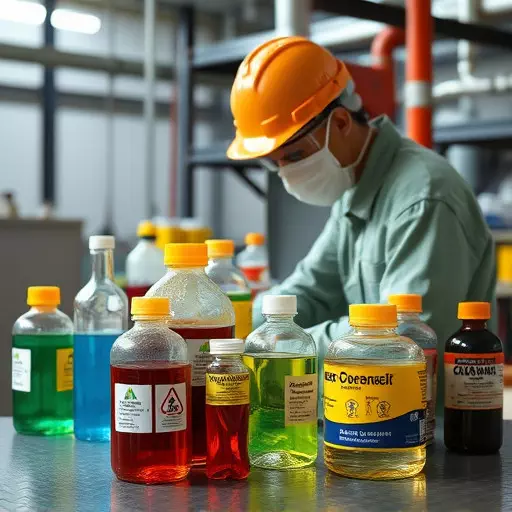
Industrial hygiene protocols play a pivotal role in mitigating the risks associated with chemical exposure in various industrial settings. These protocols are meticulously designed to identify, evaluate, and control hazardous materials that could potentially harm workers. The cornerstone of effective risk management is the systematic assessment of workplace environments to detect the presence of harmful substances. By implementing comprehensive monitoring strategies, occupational health professionals can accurately gauge exposure levels and implement necessary controls to ensure worker safety. These protocols encompass a range of measures, from personal protective equipment (PPE) to engineering controls, all aimed at reducing the risk of adverse health effects from chemical exposures. The efficacy of these measures is contingent upon their consistent application and regular updates in response to evolving workplace hazards and regulatory standards. Through diligent application of industrial hygiene protocols, industries can significantly diminish the exposure risk, thereby safeguarding the health and well-being of employees who work with or around chemical hazards. Regular surveillance and adaptability to new data are essential components of these protocols, ensuring that they remain effective in preventing workplace chemical exposures and related health risks.
Effective Strategies for Identifying and Managing Hazardous Materials
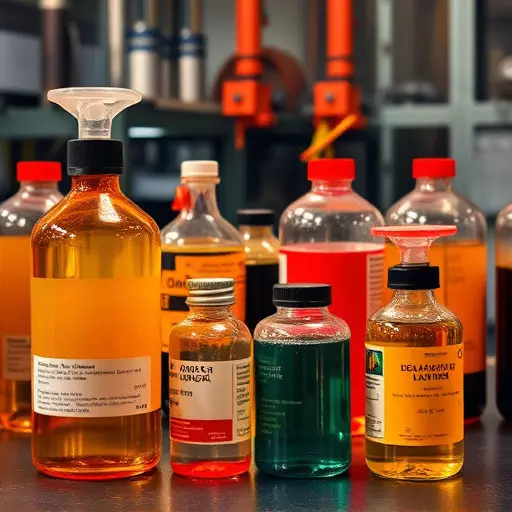
Chemical exposure risk management is a critical component in safeguarding workers from the adverse effects of hazardous materials in industrial settings. Effective strategies begin with the meticulous identification and classification of chemicals present within an operation, utilizing comprehensive safety data sheets and material safety data sheets. Industrial hygiene protocols are pivotal in this process, as they guide the assessment of potential risks associated with chemical handling, storage, and use. These protocols involve conducting exposure assessments, monitoring ambient levels of chemicals through air sampling, and implementing engineering controls to mitigate risks.
Once identified, hazardous materials must be managed through a combination of control measures tailored to the specific nature and concentration of each substance. Engineering controls, such as ventilation systems, containment devices, and automated handling equipment, are essential to minimize worker exposure. These controls are designed to reduce the concentration of harmful substances in the air or to isolate them entirely from areas where workers are present. Additionally, the use of personal protective equipment, while important, should complement these engineering controls rather than replace them as the first line of defense. Regular audits and updates to industrial hygiene protocols ensure that risk management practices remain effective and current with evolving chemical hazards. Continuous training for employees on proper handling, recognition of hazardous materials, and understanding of safety procedures is also paramount in maintaining a safe work environment.
Implementing Engineering Controls to Mitigate Risks Associated with Chemical Handling
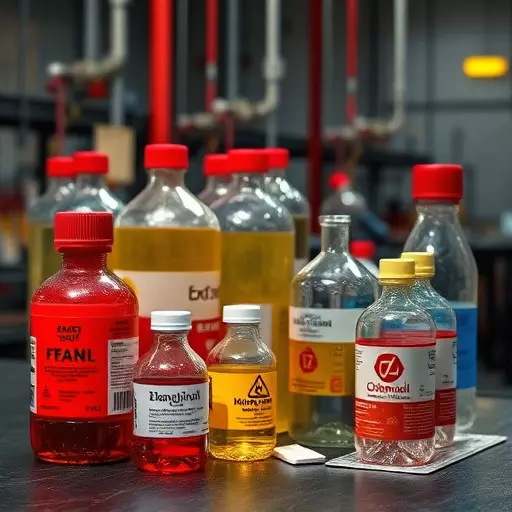
In industrial settings where chemical handling is routine, the implementation of engineering controls is paramount for mitigating risks associated with chemical exposure. These controls form a critical component of effective risk management strategies, serving as physical barriers that prevent exposure to hazardous materials. By integrating industrial hygiene protocols, facilities can identify and assess the potential dangers of various chemicals, ensuring that appropriate control measures are in place. For instance, the use of ventilation systems specifically designed to capture and contain chemical fumes or vapors is a common engineering control. These systems help maintain a safe atmosphere by diluting hazardous concentrations to below occupational exposure limits. Additionally, the use of protective equipment such as respirators, gloves, and protective eyewear, coupled with engineering controls like automated handling systems that minimize manual contact with chemicals, further enhances worker safety. Regular monitoring and evaluation of these controls are essential to adapt to new hazards or changes in chemical handling practices, thereby upholding the integrity of the risk management framework within the workplace.
The proactive identification and categorization of hazardous materials, based on their potential to cause harm, enable organizations to tailor engineering controls to the specific risks they present. For example, chemicals that are known to pose high acute health risks may necessitate more stringent control measures, such as isolation or enclosure, to prevent any accidental release. Similarly, those with chronic exposure risks might require continuous monitoring and personal protective equipment to be worn at all times when handling these substances. The adoption of engineering controls is not a one-time effort but requires ongoing management to ensure their effectiveness in the dynamic context of chemical handling. This commitment to safety through engineering controls underscores the importance of a robust risk management strategy that aligns with industrial hygiene protocols, thereby protecting workers and maintaining operational integrity.

